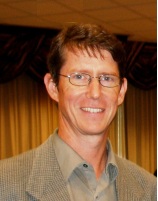Introducing An AAPM Working Group On International Dosimetry Integration: A Resource for the AAPM Membership to Identify Where Primary Standards and Protocols Are Needed for Clinical Applications
S Abbasinejad Enger1, P Alvarez2, W Culberson3, R Kapsch4, S Kry2, M McEwen5, M Mitch6, B Muir5, M Pankuch7, J Renaud5, R Tosh6*, K Working8, (1) Lady Davis Institute for Medical Research, Jewish General Hospital, Montreal, QC, CA, (2) The University of Texas MD Anderson Cancer Center, Houston, TX, (3) University of Wisconsin-Madison, Madison, WI, (4) Physikalisch-Technische Bundesanstalt, Braunschweig, DE, (5) National Research Council Canada, Ottawa, ON, CA, (6) National Institute of Standards and Technology, Gaithersburg, MD, (7) Northwestern Medicine Chicago Proton Center, Warrenville, IL, (8) Q.E.D. Medical Physics, Inc., Lebanon, TN
Presentations
TU-F115-IePD-F6-5 (Tuesday, 7/12/2022) 1:15 PM - 1:45 PM [Eastern Time (GMT-4)]
Exhibit Hall | Forum 6
Purpose: To introduce a newly established AAPM Working Group (WG) on International Dosimetry Integration (WGIDI), a resource for AAPM members to communicate the need for new primary standards and protocols for emerging technologies.
Methods: The development of new primary dosimetry standards and reference dosimetry protocols for a range of beam modalities is often done in an ad hoc or iterative way, and is commonly lagging clinical implementation. This can lead to problems for the AAPM Calibration Laboratory Accreditation (CLA) Subcommittee in requesting the timely development of accredited calibration services for AAPM members. An AAPM WG has been established with official charges to: - review the worldwide development of primary absorbed dose and air kerma standards for both external beam radiation therapy and brachytherapy, - identify where primary standards are needed for clinical applications that have become widespread,- coordinate efforts between vendors, beta sites and early adopters of new treatment/imaging modalities requiring dosimetry considerations to determine if new primary standards or protocols are required, and - identify where new or existing technologies will have impacts on current NIST standards and ADCL calibration services and make recommendations to the AAPM CLA SC.
Results: The output of the working group will be annual reports to the CLA SC. Liaisons of the WGIDI to other AAPM subcommittees and working groups will raise the need for new protocols or guidance when emerging technologies are identified.
Conclusion: A new WG has been developed with a tight focus of reviewing the development of new technologies and identifying where such developments will have impacts on current NIST standards, ADCL calibration services or could require additional protocols or modification/replacement of current AAPM protocols. The AAPM membership is encouraged to reach out to WGIDI as new technologies are adopted clinically.
Keywords
Not Applicable / None Entered.
Taxonomy
Not Applicable / None Entered.
Contact Email



